
CAT Graduate Steve Cole’s JUMP! Training diary
April 24, 2020Home » CAT Graduate Steve Cole’s JUMP! Training diary
At the start of this year, CAT Graduate Steve Cole joined lecturer Louise Halestrap and other trainers from Earth Building UK and Ireland to attend JUMP!, a European funded train-the-trainer project in the field of ecological building. He travelled to Germany to join European partners at the ECO Centre in Verden where this year’s Training for Change project was being held.
Providing the knowledge, skills and inspiration to make a real difference within the sustainability sector is at the heart of everything we do within CAT’s Graduate School of the Environment. Teaching and training students skills to combat the climate problem is at the core of our postgraduate courses and it’s always great to see how our students and graduates use these to go on to create change. Some even go on to share the knowledge and become trainers themselves.
The following diary of Steve and Louise’s trip is intended to give an insight in to the trip and explain what the Jump! project is all about.
Day 1 – 3: The journey to Verden
We set off from London St Pancras on the first train to Brussels since Britain officially left the EU to go and work with our European partners meant for an early and ironic start to the day. Problems with the Channel tunnel held us up for 2½ hours, thankfully I was travelling with Louise Halestrap and Rowland Keable who ensured that it wasn’t a quiet or dull trip. We reached Bremen that afternoon where I went off in search of my hostel for the evening and they carried on to ECO Centre in Verden to meet up with others who were organising and leading the training.
As I was taking the course rather than leading the training, I had a couple of days to explore Bremen before travelling onto Verden. Despite all the museums being closed a walk around the enchanting old streets and buildings and down by the river made for a pleasant if wet day.
As I eventually travelled to my destination I was surprised to find the centre which used to be a military barracks and has a Netto next to it. I had assumed it would be in a remote location similar to CAT which left me somewhat confused when I came across it after walking from the train station.
Old tank workshops and the impressive looking 5-story straw bale modern office block building (figure 1) are home to the Eco Centre, the venue for the 1st JUMP Training for Change programme. The evening was spent getting to know some of the 33 others in attendance over dinner and drinks.
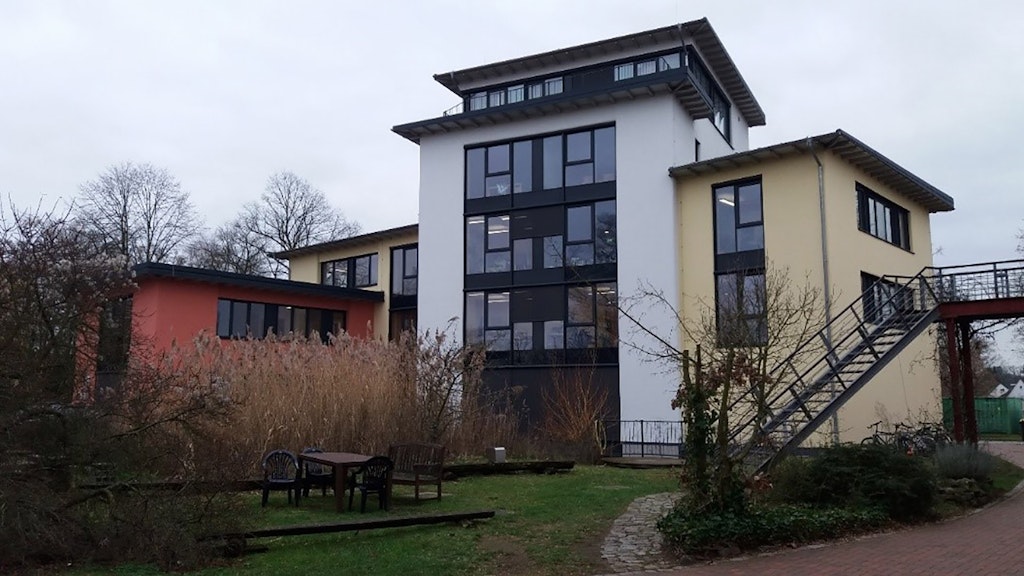
Day 4: The first day of training
The first day of the programme started with an introduction to JUMP then a silent walk through the adjacent woods to get us connected to nature. We then all got to know each other a bit more through a few games designed to break the ice. Becky Little (also from EBUKI) introduced us to Doradango (traditionally made by Japanese children), the art of making beautiful polished clay balls from just a lump of raw clay and water (figures 2 & 3).
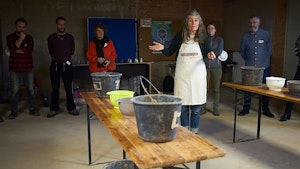
Source: www.trainingforchange.eu
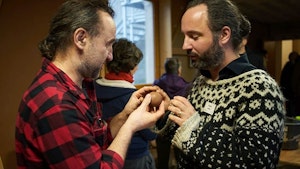
After break we were then divided into Jumpers (the ones running the programme) and Pioneers (us who were here to learn and give feedback on the programme before it goes live). I was split up from the other Brits to work with the French, Austrians, Germans, Swedes, and Slovaks. Our group then focused on the sustainable construction module where we first did some builders yoga to get us warmed up before dismantling two sections of straw bale walls that on one side had been plastered with lime (figure 4) and the other with clay (figure 5).
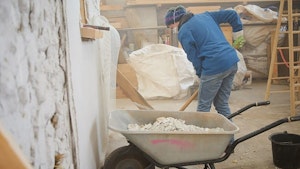
Source: www.trainingforchange.eu
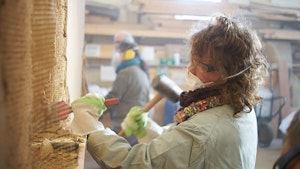
It was the first time for many of us in taking down work that we usually create at such training centres, I think it beneficial that all builders get to do this as it really makes you appreciate the end of life phase of a building and gives an insight in to what materials can be separated and potentially used again.
In the afternoon we looked at sustainability and life cycle analysis (LCA) where, in pairs we were given the task of preparing a short lesson plan that we would use to teach to the rest of the group the following morning. After a feedback session, it was then time for food in the wonderful organic restaurant, after doing our homework (lesson plans) it was time to enjoy some German beer with dancing to a wide variety of world music.
Day 5: Training methods
The next day it was our turn in pairs to deliver the lesson plans that we had prepared to the rest of the group (figure 6) which proved very useful in highlighting different approaches and methods available which are now all available on the JUMP website. Feedback was given before we looked more formally at different teaching methods and discussed the various pros and cons of each. We then looked at ‘how to make toast’ (figure 6), a design exercise by Tom Wujec that can help to solve complex problems through visual thinking.
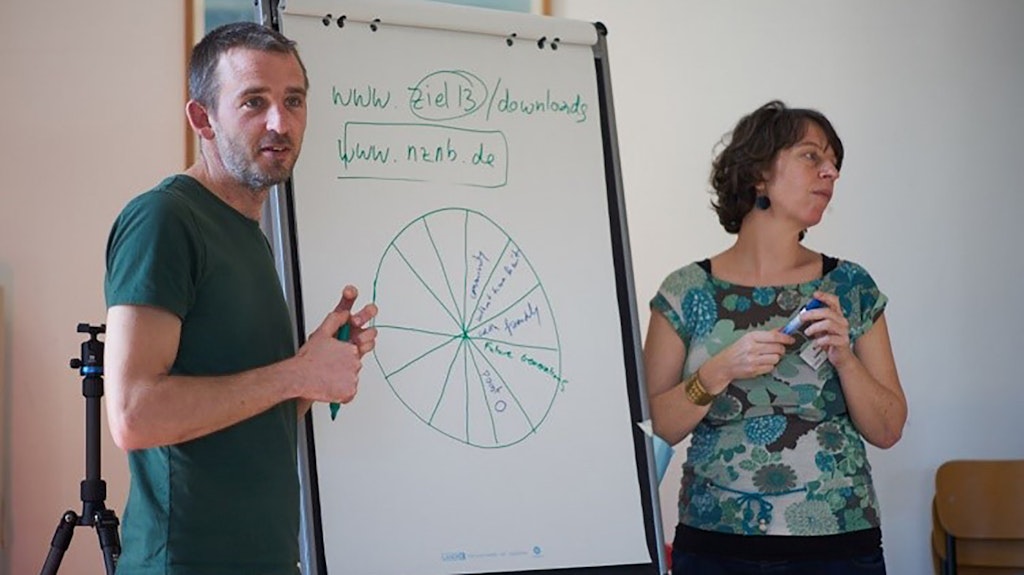
Source: www.trainingforchange.eu
Day 6: Feedback
Co-operation was the focus for the morning with various games being played to help demonstrate how they can be useful tools in bringing people together. We also had a proper introduction to the JUMP website and using the various tools in the toolbox had to write a lesson plan that could then be explained and demonstrated to the rest of the group.
Next, we looked at several ways to give/gain feedback before having to give our own face to face feedback regarding the programme. Each group was then tasked with presenting to the other group what exactly it was that they had been doing for the last few days, this proved a nice way of reminding us what we had just done but also gave a useful insight in to the other groups work. Our Doradango clay balls were then the focus of attention, some looking beautifully polished, some embracing the imperfections that come with building with natural materials. An overview of the JUMP project was then given along with the plans for the future and how we each might want to be involved.
In Summary
Reflecting on the trip I have been pondering on a few things. Firstly the location of the course itself. The Eco Centre wasn’t set in an old quarry on the outskirts of Snowdonia, but their down-town location and on-site building supplies shop helps to normalise sustainable construction and straw bale building.
The course itself was interesting, having just completed my MSc most of what was being taught on sustainable construction wasn’t new to me but I did enjoy learning about the different teaching methods and techniques that could be used to facilitate teaching others about the subject.
As always, the most enjoyable part of the trip was meeting and learning from the other attendees on the course who came from varying professions and various countries. It was a joy to be able to discuss our work and compare notes with others from different cultures who are working towards a shared goal.
Since getting back to Wales I have been wondering about the next steps and how to facilitate the teaching of sustainable construction and try to make it the new normal. I will start with the following: Talking more with the people I already work on site with; Improving the content of my website to help inform people and direct them with useful links; When able, take apprentices; Try to engage with schools, colleges and other learning institutions that would be open to running courses.
About Jump!
JUMP! is a train-the-trainer project in the field of ecological building. It aims to combine technology and vision into something greater which is sustainable, holistic, and humanistic. It is also the first time that earth building and straw bale building organisations have joined in a common project. JUMP! project is based on the manufacturing methods developed over decades in straw bale and earth building. Both methods of construction are taught in ECVET-certified courses. The attention is focused on the use of sustainable, biologically beneficial materials, conservation of resources, renewable energy, solar architecture.
About the Author
Steve Cole graduated in 2019 from our MSc in Sustainability and Adaptation in the Built Environment course. He runs Addasu, where he combines his academic research with extensive experience in new-build and renovation projects in the UK (and Ghana) to offer informed, practical and appropriate training, advice and construction services.
- Graduate School
- Building
- Education
Related Topics
Related Pages
Related news

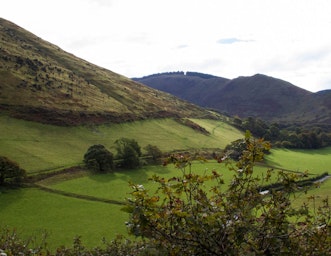
CAT Conversations: Sandy Stevens, CAT graduate
17th April 2025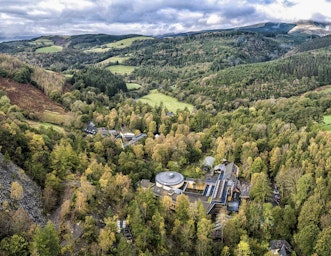
CAT Student Bursaries Announced for 2025
30th January 2025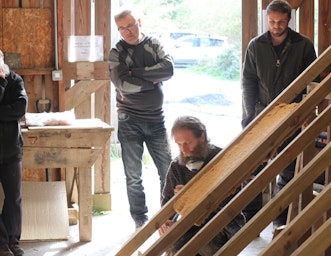
CAT stories – Nick Parsons and Mike Russell
29th January 2025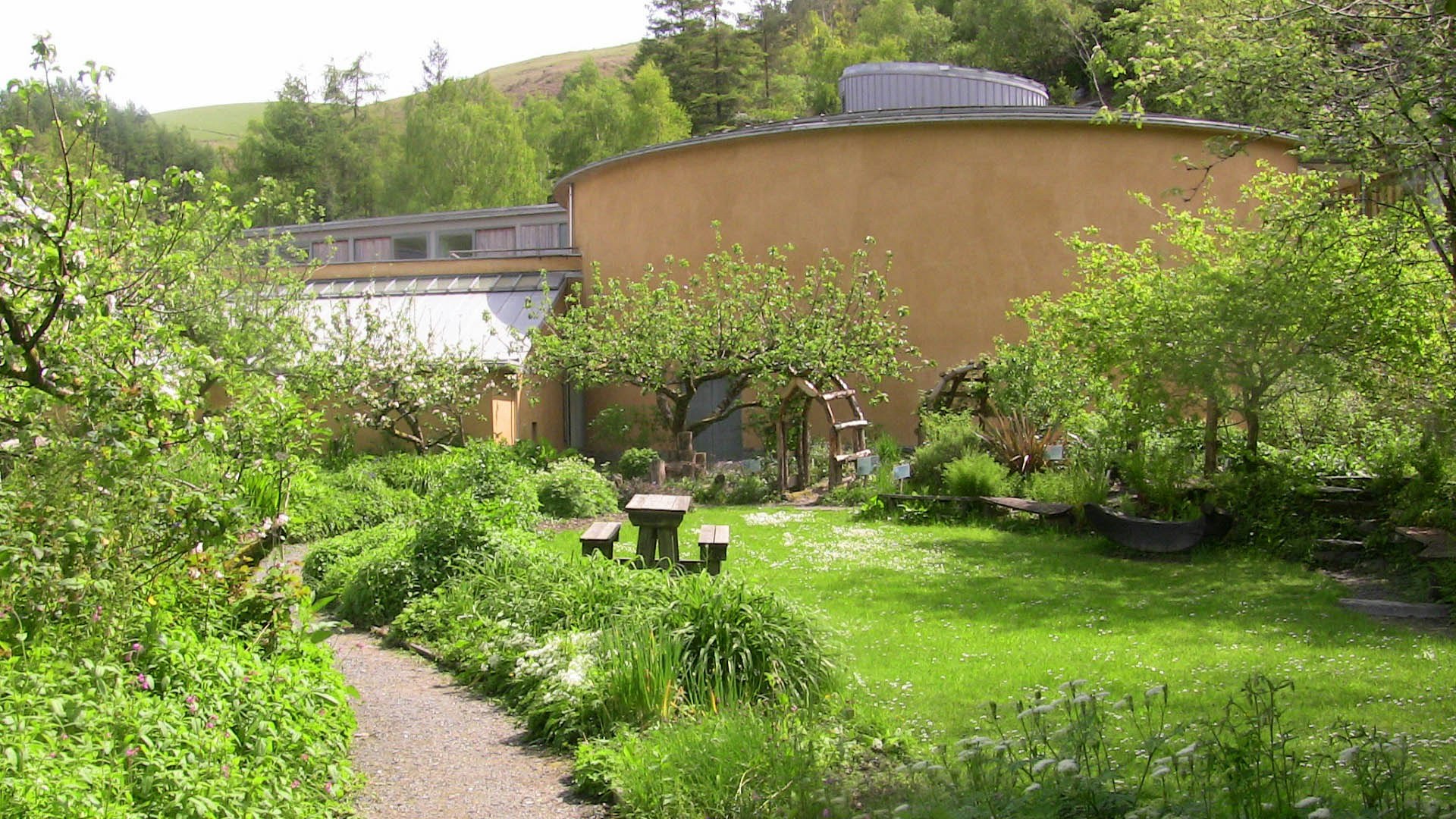
Graduate School of the Environment
Enews Sign up
Stay up-to-date with the latest news, events and activities from CAT by signing up to our Enews and following us on social media.
